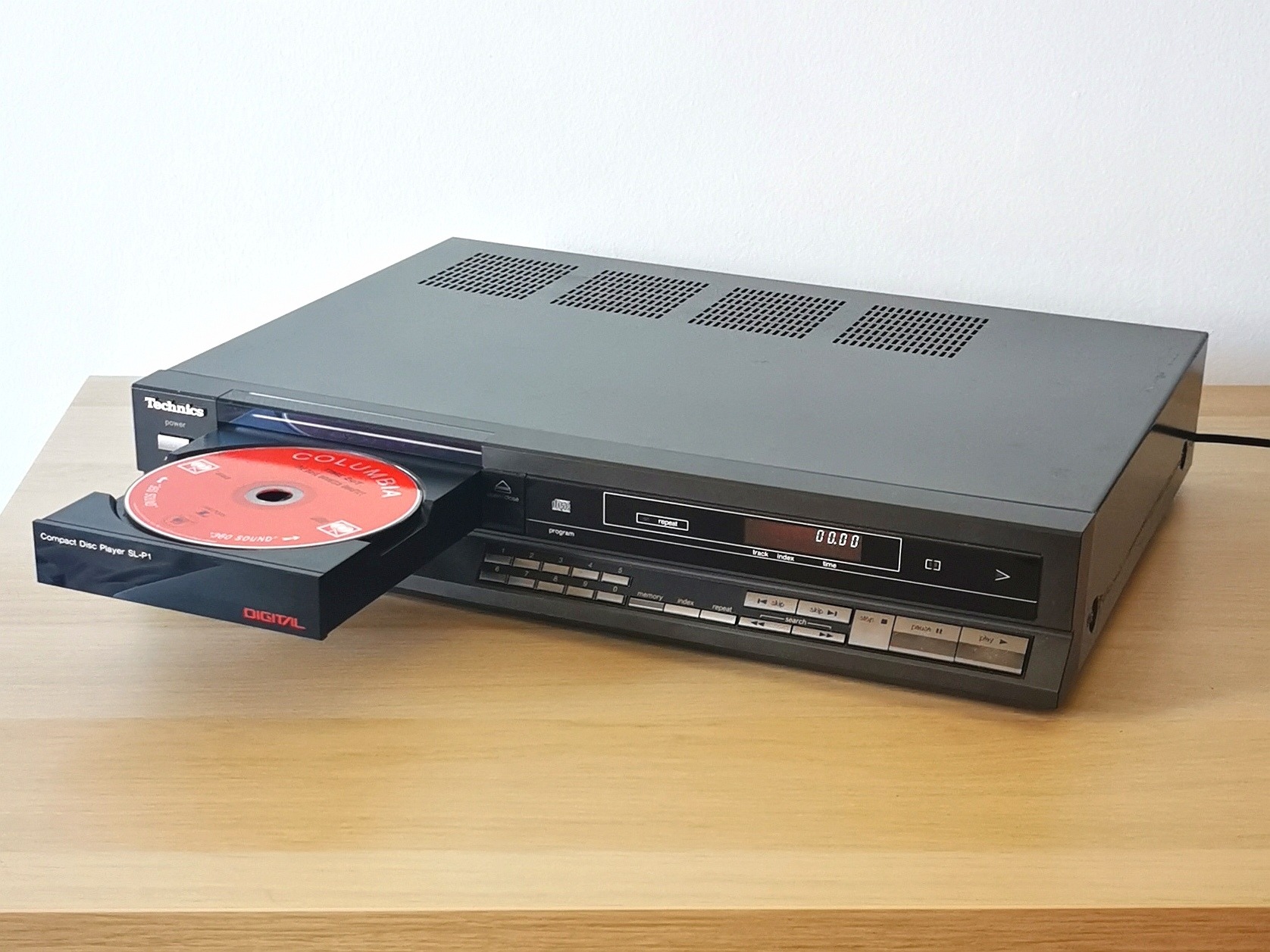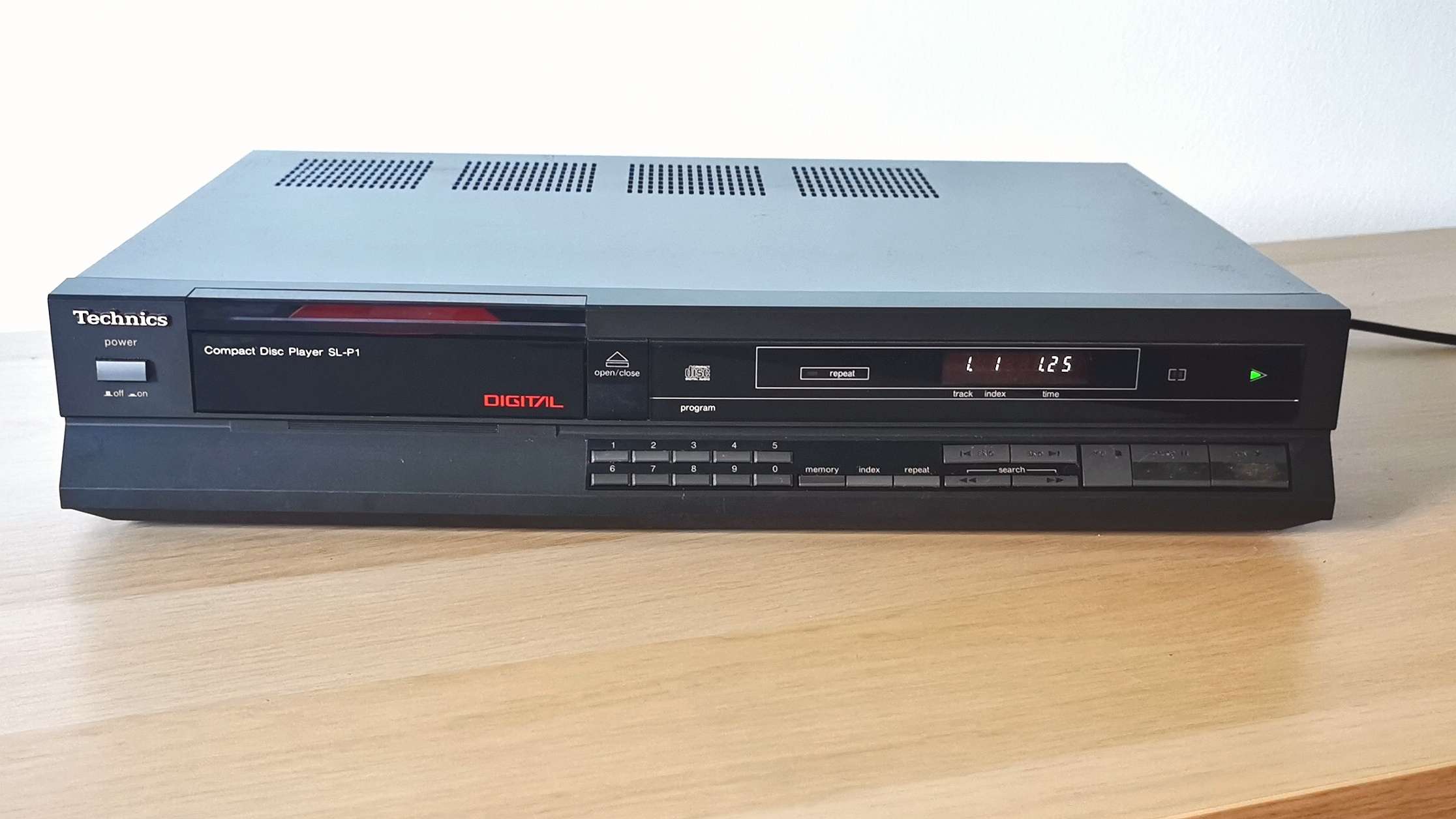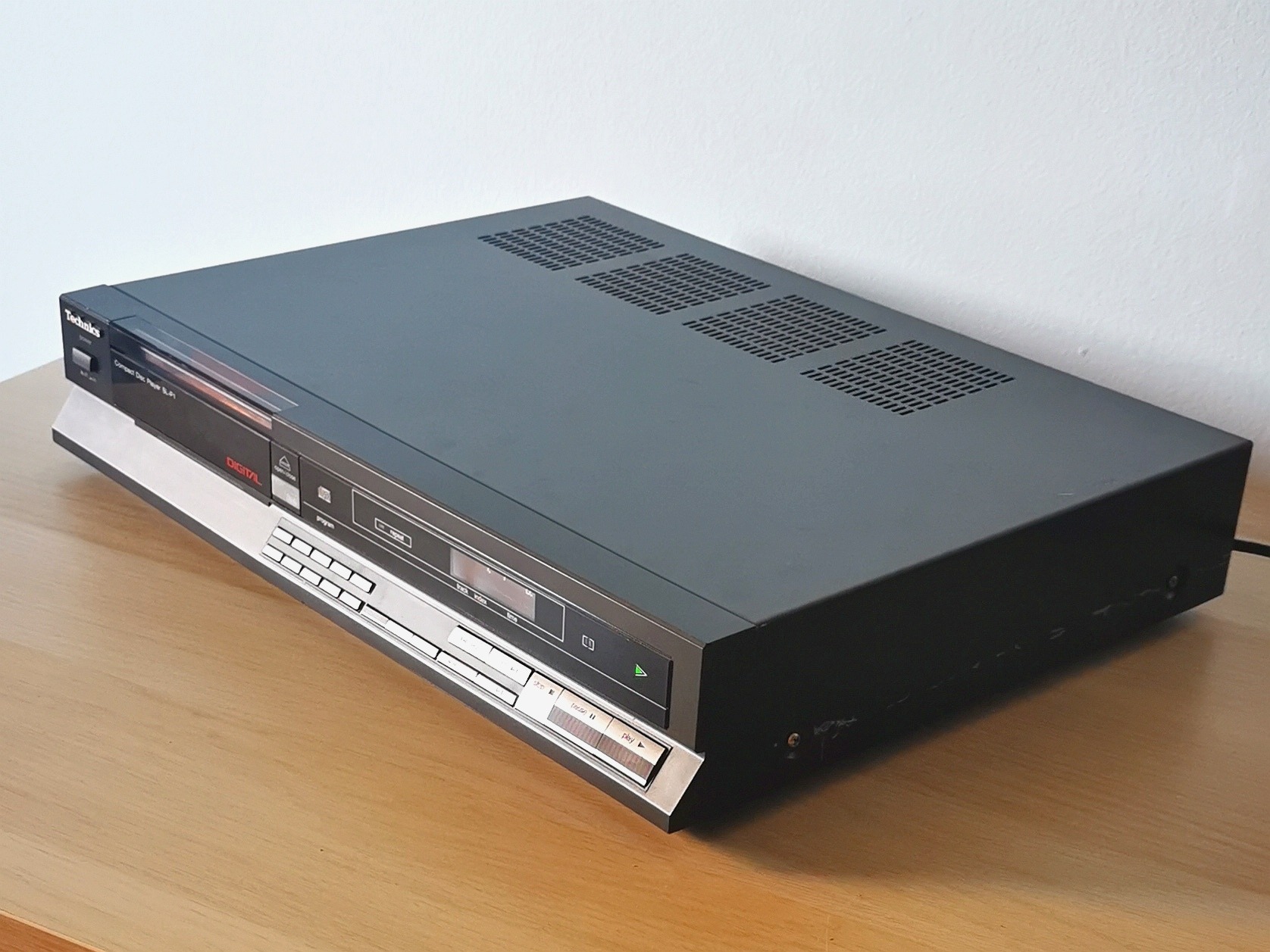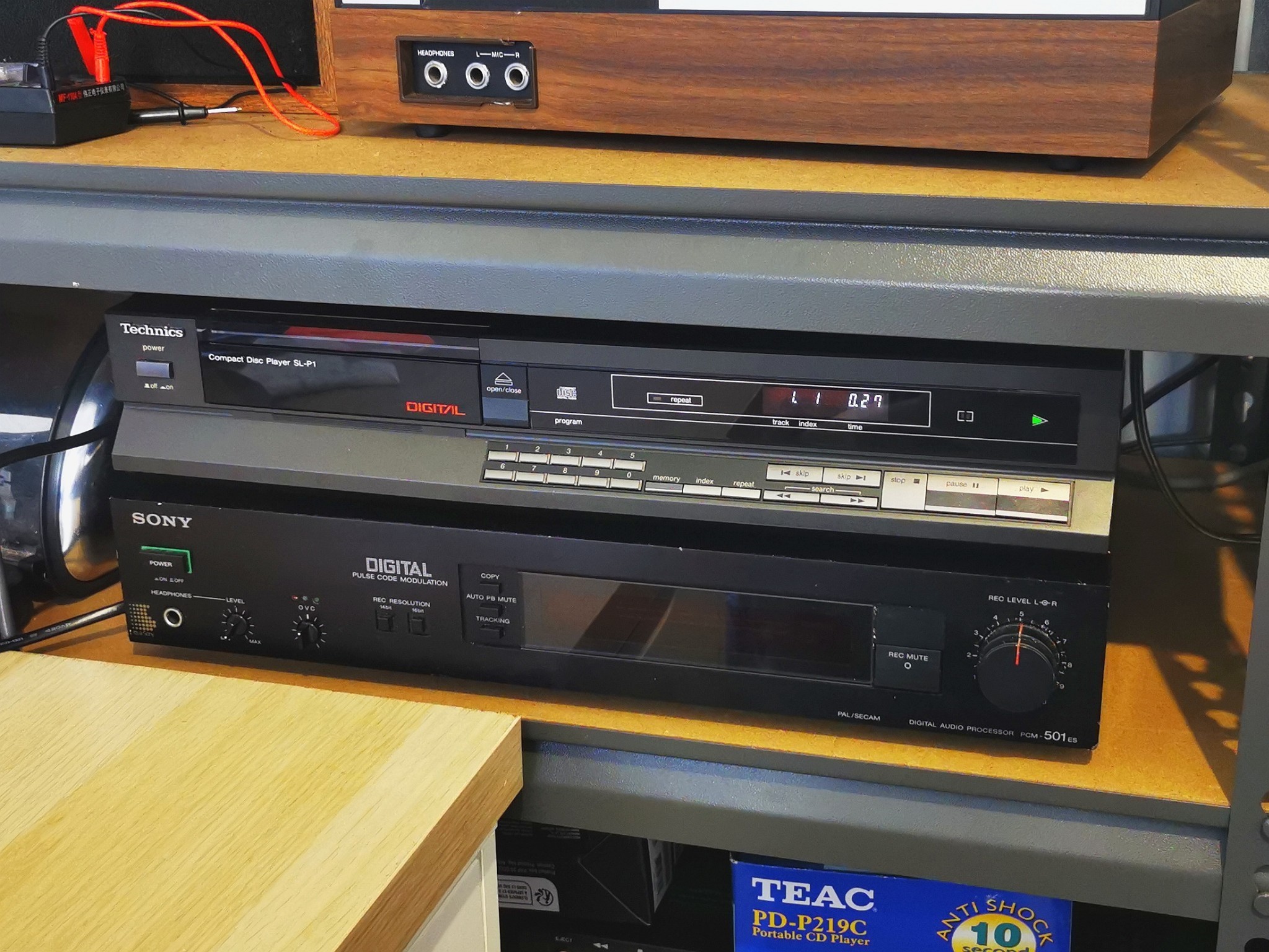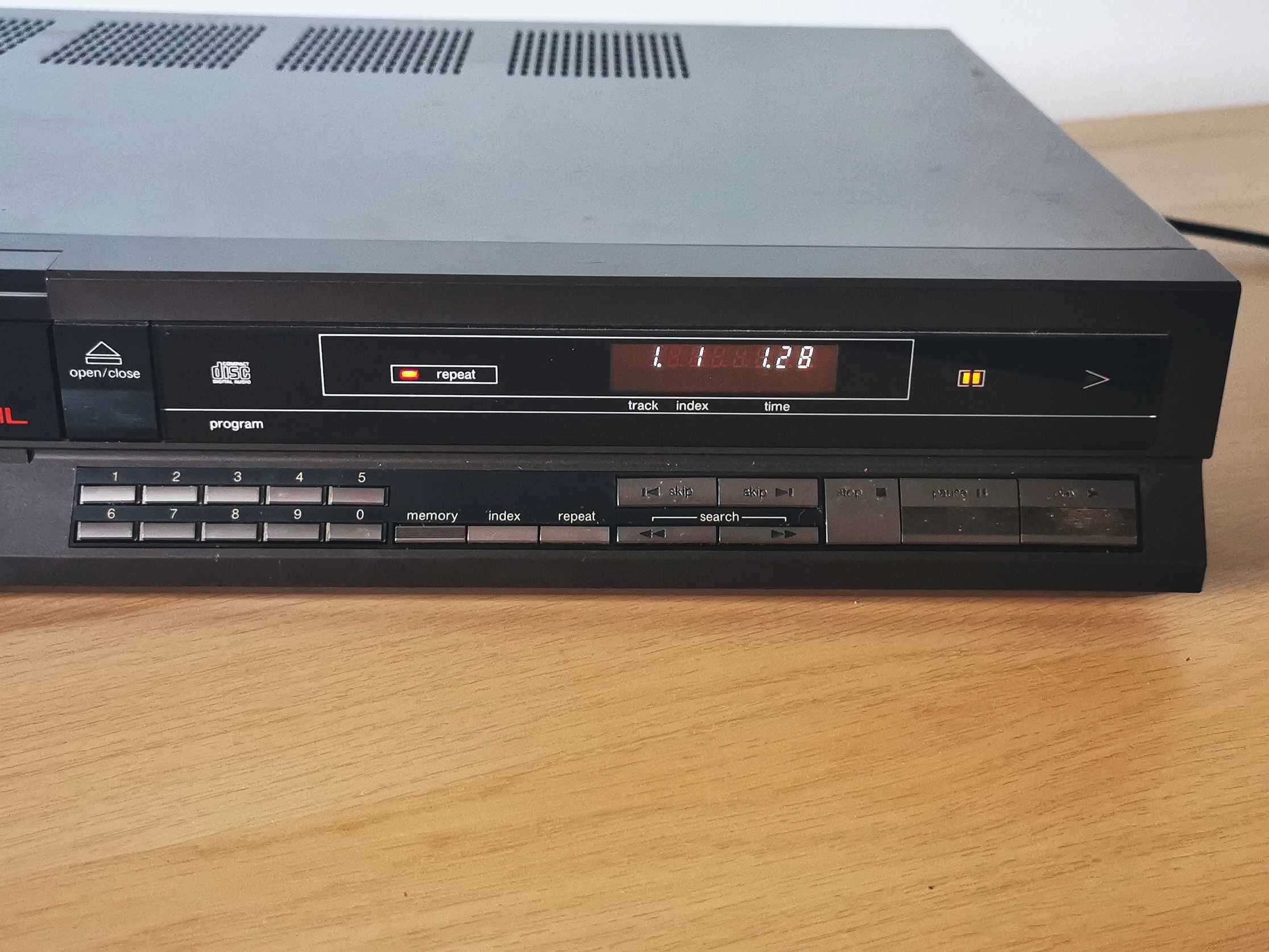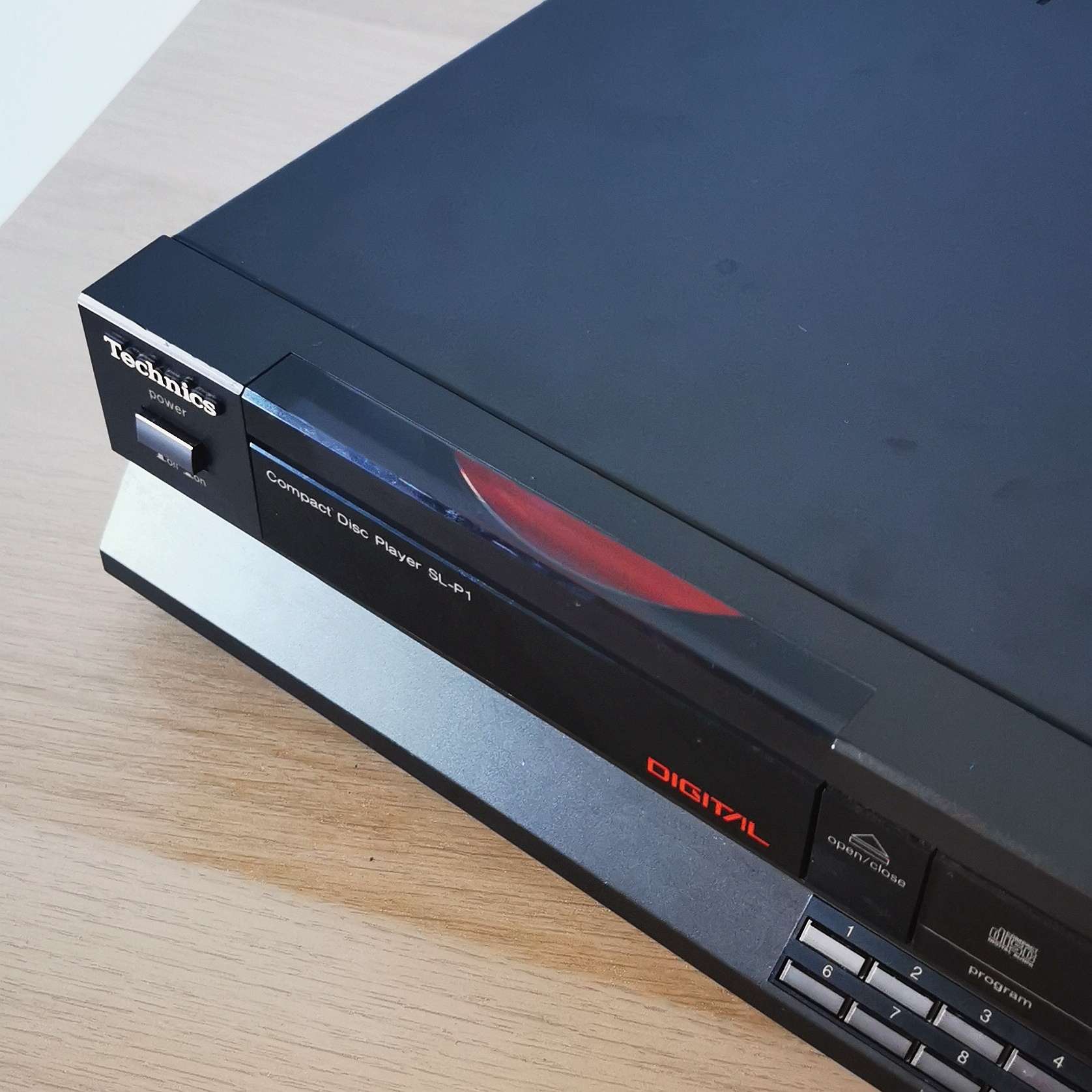Technics SL-P1 CD Player
The Technics SL-P1 is their entry-level player from their 1984-1986 lineup. While decidedly a budget unit, it has the same Burr-Brown PCM53 DAC and 3-beam laser pickup as its higher end siblings the SL-P2 and P3, as well as the nice bronze-tinted dark grey common of Technics equipment of this era, and a window with a 45 degree "mirror" (actually just a thick piece of Perspex cut at a diagonal) that allows you to see the disc spinning away inside. It has a numerical keypad for track entry, and supports both track skipping and cueing/fast-winding with audio output, but it misses out on the custom designed displays, headphone jacks, remote controls, tray illumination and timer playback of the SL-P2 and P3. While basically constructed and featuring an off-the-shelf numerical display (as found in calculators of the time) for cost savings, the slanted control panel, window into the CD tray and typically Technics grey-and-silver colouring give it great shelf appeal, and no corners were cut in the DAC and output stages, the most important part.
I purchased this unit on facebook marketplace for $100 as a replacement for my SL-PJ20 - while it is technically a direct downgrade in terms of specifications, the full-width sizing and more striking styling makes it a more appealing unit for me, and I was particularly excited by the presence of the window on it. While in good cosmetic condition on the faceplate, my example has long scratches on the side of the case, and has clearly been tampered with before - the screws holding the top and sides casing on are not original. When I got it home, while it was loading and playing discs, once hooked up to my hifi there was a constant digital "ch-ch-ch-ch" sound interrupting the music, and the tray open button was temperamental (plus the tray opened very slowly when it did work) - clearly some work was in order.
On opening the unit it became abundantly clear that it had been worked on before, as there were sharpie-marks on the plug connectors so that someone would avoid losing track of which plugged in where. While initially I had thought that the disc error problem was due to a dirty laser, my housemate pointed out that the discs seemed unusually wobbly, and in fact one CD from my collection didn't wobble as much - and didn't have the ch-ch-ch sound. After quite a while of tinkering, the fault turned out to be that the upper disc clamp had come misaligned - the rotating portion of the clamp is supposed to be completely "floating" during playback, only weighing down the CD and not actually touching the metal holder it sits inside, but that metal holder and the large bracket it was mounted to had shifted in transit, making the clamp bump when spinning, setting discs wobbling. Fixing this fixed the problem - and also revealed more evidence of tampering, as 2 of the 4 screws holding that big bracket in place were outright missing. While inside the machine I also contact cleaned the buttons, which fixed the temperamental tray loading, completely took apart and relubricated the tray with lithium grease (it now runs much smoother and quieter), and gave it a thorough clean.
Later it inexplicably developed a new fault - the tray, on inserting with or without a disc, would close, but then sit there for a few moments and eject the tray. I found (as is common) that a little bit of percussive encouragement (aka smacking the top once the tray is closed) would get it to read discs and keep the tray closed correctly. This baffled me for a little bit, but I soon worked out the problem was - expectedly - the belt that drives the tray. While the tray itself was closing completely, at the end of it's travel it was designed to be pulled on further, sliding a separate piece attached to the tray further back, which would lower the disc clamp and the disc into place. It was this last bit that wasn't quite getting there - so the smacking the top was enough to make those parts lower, but on its own the motor didn't have enough grip to pull the mechanism that did this into place. Replacing the belt fixed it.
While I was inside I also adjusted the unit until it could successfully read CD-Rs. Various online sources will tell you that the problem is that CD-Rs are darker, so I had thought increasing the laser amp gain and lowering its cutoff would fix the problem, but this was not the case - instead, it was actually fiddling with the tracking adjustments that allowed it to read burned discs consistently and with the same speed as pressed discs. The potentiometers to adjust this are underneath the transport, but they are mounted on the edge and at right angles so you do not need to do much disassembly to adjust, just take off the top cover and you can reach them from the side. The correct way to do this is with an oscilloscope, but I don't own one - instead, I messed with the tracking gain, balance, and offset (VR104, VR105 and VR106 on this model) until I got consistent results. This is not the correct way to do this, but my life motto is "If its stupid and it works, its not stupid" and this did indeed work!
This machine may not be a particularly good player, and in fact is not even the best player I own, but it has unique styling that I particularly like, and for that it's earnt itself a place as my current main CD player, and it sounds just fine to me. I can't hear the difference between CD players, the only distinguishing features to me are their cosmetics and ergonomics - and this machine does have better cosmetics (and, with a numerical keypad, arguably ergonomics) than the SL-PJ20, even if it's measurably the worse of the two! I do also plan to modify in an LED above the tray (as its more expensive siblings had) eventually, to give some nice illumination of the discs inside.
